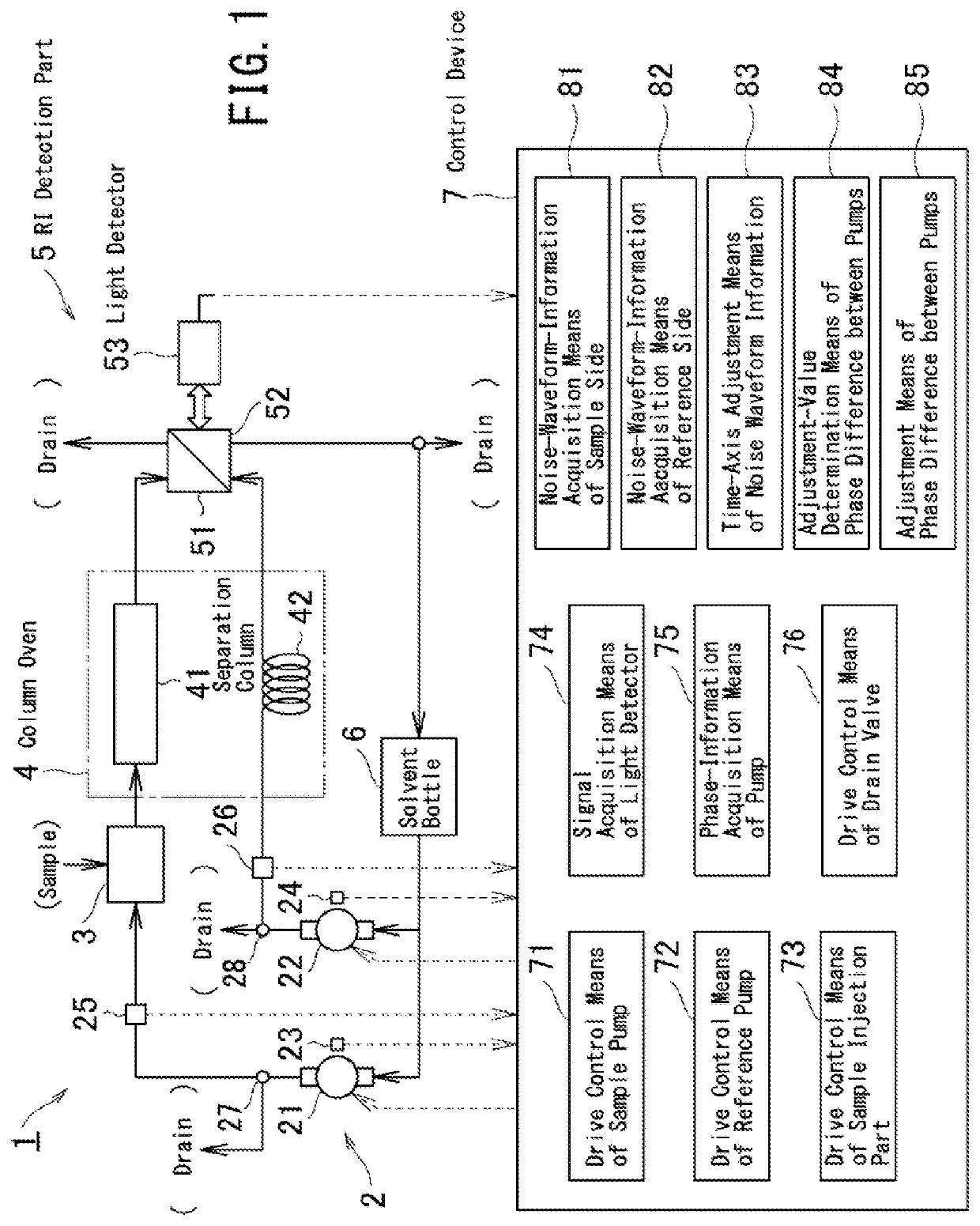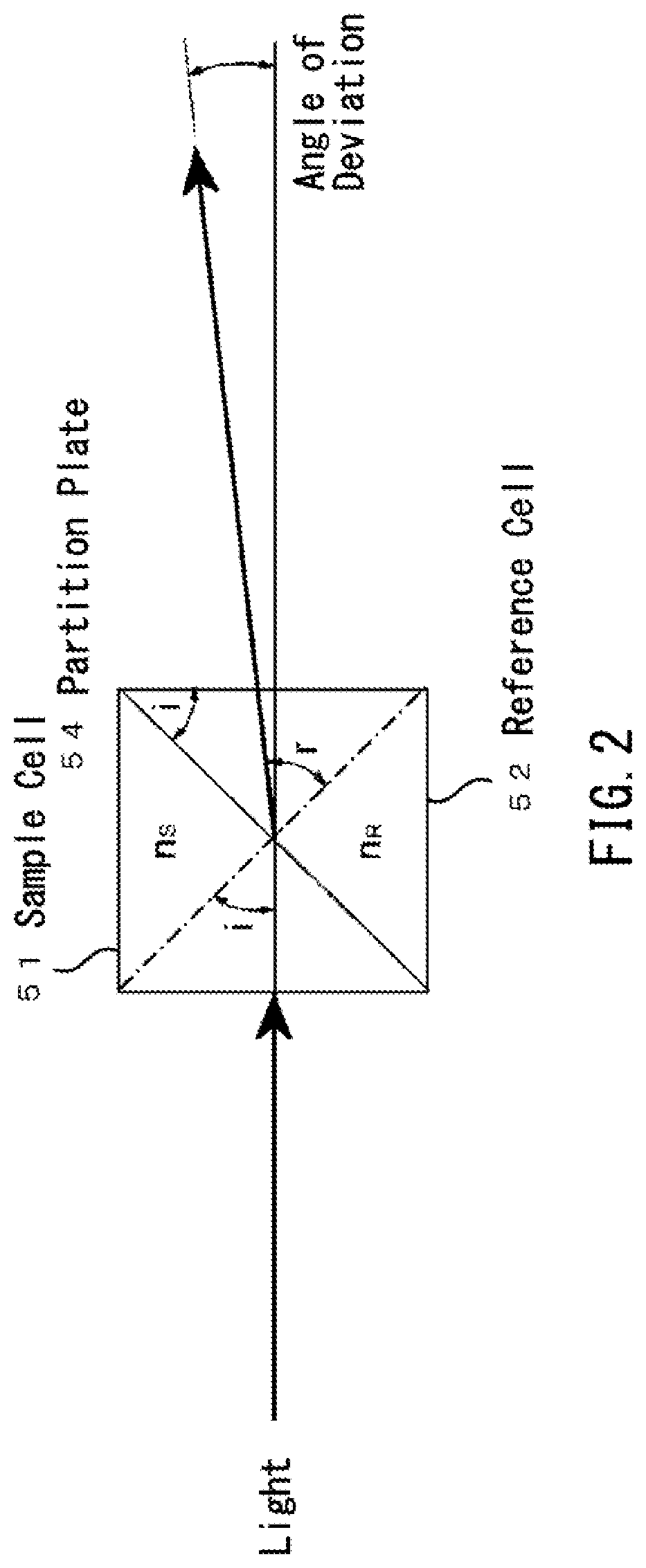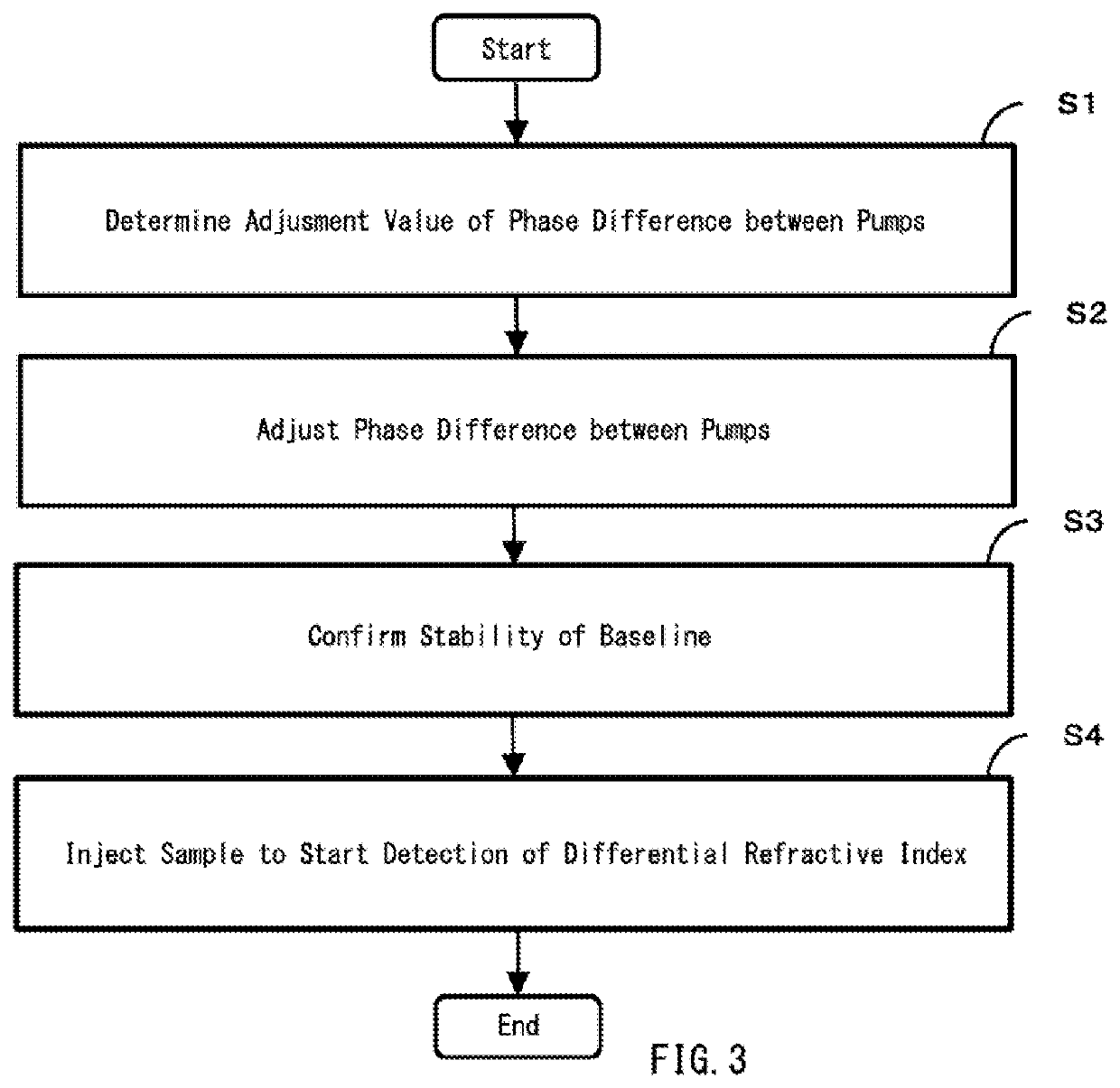Differential refractive index measurement method, measurement device, and measurement program
- Summary
- Abstract
- Description
- Claims
- Application Information
AI Technical Summary
Benefits of technology
Problems solved by technology
Method used
Image
Examples
second embodiment
[0130]The adjustment method of the phase difference between pumps is described with reference to FIG. 12. The two graphs in FIG. 12 are actual measured values of a relation between the phase difference between pumps (horizontal axis) and the noise level (vertical axis) with respect to the two analysis devices of System A and System B. The inventors experimentally confirmed the existence of the phase difference of which the noise amplitude of the baseline becomes the minimum in the system configuration when the phase difference between the two liquid-sending pumps is changed sequentially. To what degree should the phase difference between pumps be set to minimalize the noise amplitude of the baseline depends on the system volume, the type of the solvent, and a system pressure; therefore, it is necessary to experimentally confirm for each system configuration.
[0131]Thus, the adjustment method of the phase difference between pumps according to the second embodiment comprises steps of:...
first embodiment
[0134]Lastly, FIG. 14 depicts one example of the chromatogram when the chromatograph of the first embodiment is applied to GPC (dual-flow type). For comparison, FIG. 15 depicts one example of the chromatogram measured by a conventional GPC (single-flow type). The vertical axis is the differential refractive index, and the horizontal axis is retention time. In either case, tetrahydrofuran (THF) that does not contain a stabilizer was used as the mobile phase, and a polystyrene standard sample consisting of five components was used as the sample. The number of repetitions is respectively ten times.
[0135]It can be seen when the two are compared that, in the chromatogram of FIG. 14 according to the present embodiment, there is no drift in the baseline like the chromatogram of FIG. 15, a stable baseline is acquired, and repeatability of measurement is excellent. Even a mobile phase of an unstable composition such as THF that does not contain a stabilizer is used as the solvent, a stable b...
PUM
| Property | Measurement | Unit |
|---|---|---|
| Phase | aaaaa | aaaaa |
| Noise | aaaaa | aaaaa |
Abstract
Description
Claims
Application Information
 Login to View More
Login to View More - R&D
- Intellectual Property
- Life Sciences
- Materials
- Tech Scout
- Unparalleled Data Quality
- Higher Quality Content
- 60% Fewer Hallucinations
Browse by: Latest US Patents, China's latest patents, Technical Efficacy Thesaurus, Application Domain, Technology Topic, Popular Technical Reports.
© 2025 PatSnap. All rights reserved.Legal|Privacy policy|Modern Slavery Act Transparency Statement|Sitemap|About US| Contact US: help@patsnap.com



